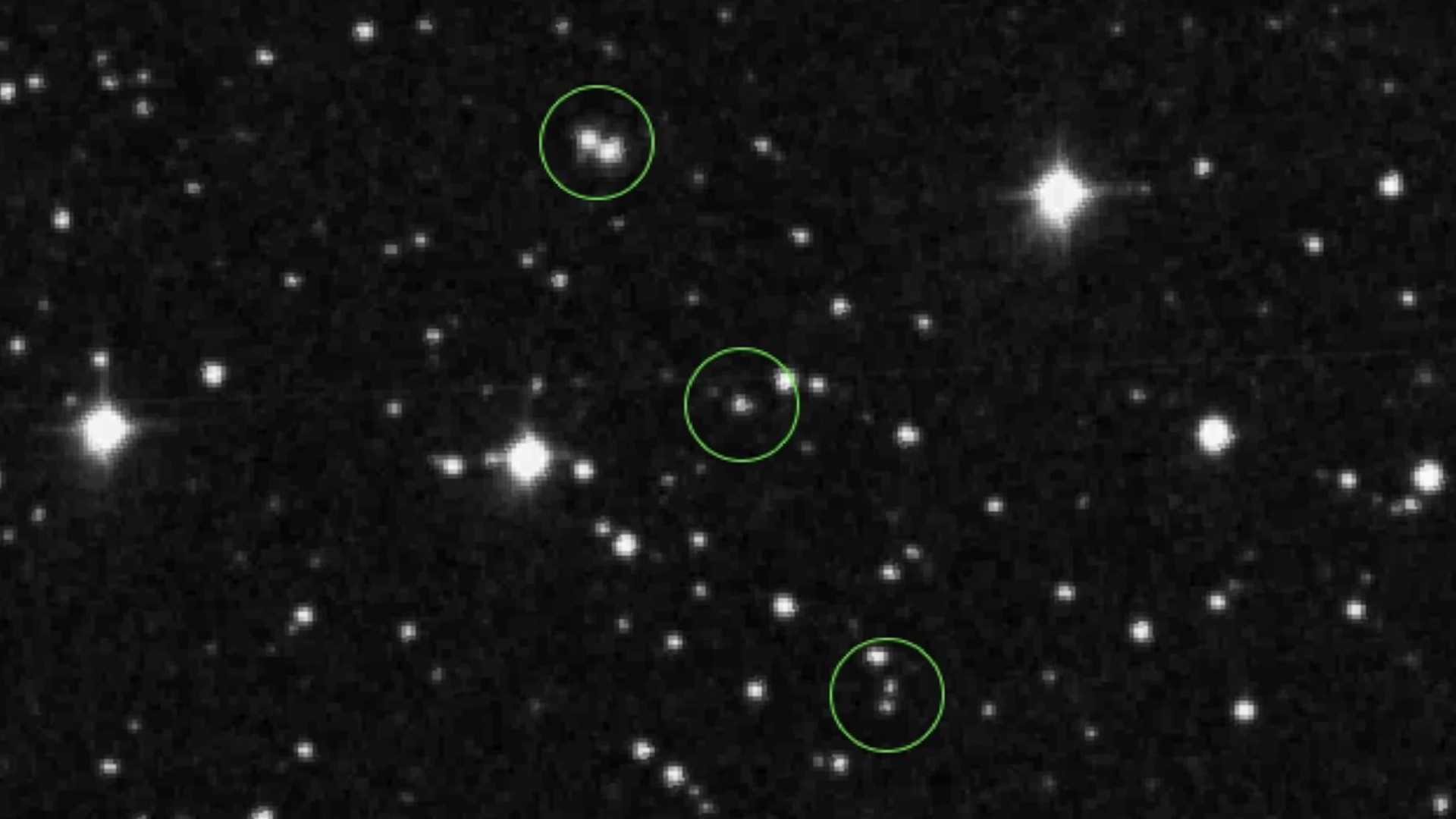Radical New Theory: Black Holes Attack and Devour Stars from the Inside
Asif they weren't considered beastly enough, black holes can dive into nearbystars and devour them from the inside out, scientists now suggest. Such invasionsby such black holes could help explain the most powerful explosions in theuniverse, gamma-ray bursts, whose origins remain elusive.
Theidea needs support from further theoretical work, and observations would help,too. Meanwhile, here's what spawned the notion:
Gamma-raybursts are narrow beams of intense radiation that can unleash as much energy as our sun willduring its entire 10-billion-year lifetime ? all in anywhere from millisecondsto a minute or more. The processes that can generate that much energy in thatshort a time are among the biggest mysteries in astronomy today.
Themajority of gamma-raybursts last two seconds or more. These cosmic flashes, dubbed long gamma-raybursts, are linked to jets of plasma from massive dying stars. Scientistscurrently suggest this plasma is heated up by the energy released fromneutrinos as they meet and annihilate their antimattercounterparts. Both kinds of particles are emitted by the dense, hot disk ofmatter that accretes or builds up around a black hole as it rips apart a dyingstar.
Nowresearchers have come up with a different, radical explanation ? the plasmajets come directly from blackholes when they invade stars.
Powerful forces
Theirconcept is based on recent observations by the Swift satellite that indicatesthe central engine driving these plasma jets can operate for up to 10,000seconds, much longer than the neutrino model can explain.
Breaking space news, the latest updates on rocket launches, skywatching events and more!
Scientistsat the University of Leeds in England instead suggest the matter that fallsinto black holes can generate extremely powerful magnetic forces that focus anddrive the plasma jets linked with long gamma-ray bursts. The matter has towhirl very rapidly, with the centrifugal forces caused by this spin opposingthe powerful gravitational pull of the black hole, for the prolonged blast seenin long gamma-ray bursts.
Theresearchers found one way such whirling matter could result is if a black holeplunged into a star and began eating it from the inside. As the black holeripped the star apart, its remains could twirl apart in precisely the right wayneeded for a long gamma-ray burst.
"This'invader variant' provides a natural explanation of the very fastrotation," researcher Serguei Komissarov, a mathematician and astrophysicistat the University of Leeds in England, told SPACE.com.
Other ideas
Anotherway such rapid spinning might have occurred is if the dying star was initiallyborn rotating very quickly and retained this rate of spin during its entirelife. Also, the dying star in question might have orbited very close to anotherstar, and the resulting tidal forces ? the tug of one object that distorts theshape of another, just as the sunand moon cause tides in Earth's ocean and even in its rocky crust ? couldhave spun it up, Komissarov explained.
"Themagnetic model has been proposed by other scientists, say 10 years ago or so,but was never popular," Komissarov said. "During the last fewyears we have been studying the true potential of this model and now we arguethat some observational data, including the latest data from Swift, speak infavor of it."
Komissarovdid caution that no direct observations linked with long gamma-ray bursts haverevealed the extremely strong magnetic fields required by their model so far.
"Furtherresearch, both theoretical and observational, is needed to clarify thisissue," he said.
Komissarovand his colleague Maxim Barkov detailed their findings in the Monthly Notices of theRoyal Astronomical Society.
- Video:Black Holes ? Warping Time & Space
- AntimatterIs Real, But Where Is It?
- The 10Greatest Explosions Ever
Join our Space Forums to keep talking space on the latest missions, night sky and more! And if you have a news tip, correction or comment, let us know at: community@space.com.

Charles Q. Choi is a contributing writer for Space.com and Live Science. He covers all things human origins and astronomy as well as physics, animals and general science topics. Charles has a Master of Arts degree from the University of Missouri-Columbia, School of Journalism and a Bachelor of Arts degree from the University of South Florida. Charles has visited every continent on Earth, drinking rancid yak butter tea in Lhasa, snorkeling with sea lions in the Galapagos and even climbing an iceberg in Antarctica. Visit him at http://www.sciwriter.us
